by Jose | May 4, 2014
I was moved by Martha Pollack’s remarks at spring commencement yesterday. Paraphrasing the late positive psychologist, Christopher Peterson, she said “people matter. The good life isn’t necessarily the easy life; good character helps get you through the tough times; money can buy happiness, but mostly if you spend it on other people; and service is high on most people’s lists.”
Looking back on two years of medical school, these words resonate strongly with many of the triumphs and tribulations of medicine and the path to becoming a physician. The truth is that medical school is tough, especially in ways you don’t expect it to be. We are challenged in lecture halls and classrooms, yes. We are challenged in practice patient scenarios and on standardized exams. We are challenged in these ways every week — learning detailed mechanisms of pathophysiology, memorizing long drug charts, and applying this knowledge to case scenarios. These tasks are certainly challenging, but I’ve found the most difficult moments to be the ones that push you to become a better person. To assume a role of leadership when you are least expecting to. To discover what medicine means to you, and to hold on to that definition. To cultivate friendships despite the long and hard hours of studying. To build a career path that will be both professionally and personally fulfilling. So I think Christopher Peterson really hit the nail on the head with his theories for what makes life (and a profession) meaningful and worthwhile. People do matter – incredibly much – and medicine is an amazing profession despite it not being easy (and perhaps partly because it is challenging). Good character will certainly get you through the tough times in medical school and service is the foundational reason for why medicine is so rewarding.
One of my favorite things about this university has been that deeply insightful and moving moments like this lurk around every corner! From graduation speeches in the Big House, to concerts at Hill, and patient rooms in our own hospital system, you never know when you will stumble across something that will make you stop and reflect and grow, moving you closer to the person you will be when you leave this place. I couldn’t be more excited to start a new chapter of experiences and personal growth as a third year (M3) in the Mott Children’s Hospital next week!
Cheers!
-Jose
by Jose | Aug 15, 2013
We survived Quito! Bus rides, ziplines, bug bites, altitude sickness, questionable food, long days. We tried new fruits, hiked volcanoes, danced salsa, trekked through waterfalls, swam in the Pacific, and fell in love (again, in my case) with Ecuador.
Work was challenging but also rewarding. My group led a series diabetes management workshops for patients in the south of the city, where the poorest and most medically disenfranchised populations live. Plans were honored only loosely as improvisation reigned when patients showed up late (or not at all), workshop dates were delayed or deleted, and research goals went unattained despite our hard work. Yet simply spending time with patients who deeply appreciated our presence made everything worth it. Dancing cumbia with the 60+ group, listening to the difficulties of living with diabetes, building “health plates” in our workshops. The final lesson stands clear: global health will never be an easy practice, but it will always be meaningful and necessary because it focuses medical practice on the patients who are in greatest need of our assistance.
Hundreds of different experiences packed into one small country, just like the hundreds of little seeds packed into delicious (and diabetes-fighting) granadillas and maracuya.

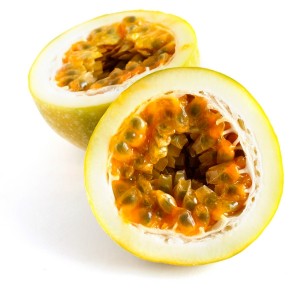
by Jose | Jun 27, 2013
I just made it back to Huaraz after five days of camping in the foothills of Mt. Huandoy. The days were sunny and hot and the nights were freezing. Thankfully I had a rental down sleeping bag that kept me toasty. The views were absolutely breathtaking. In the mornings I woke up to clear views of the Callejón de Huaylas and Cordillera Negra on one end of my tent and Mts. Huascarán and Huandoy on the other side. I hiked every day and met a few U.S. doctors (by coincidence), a group of british student-volunteers, and a Polish couple from Canada, all who made great company. At night you could see what seemed like every star in the universe, including the milky way and occasional shooting stars. Nights were also incredibly quiet except for the occasional rumble of avalanches in the distant mountains
As promised, here is a packing list plus a few tips for packing everything you need for summer travels and research into a carry on bag.
1. Backpack – 40 to 50 L. Make sure you try it before you buy it.
2. Clothes – Think layers, versatility, and pack as little as possible. I could have left a few items at home. All was stuffed into a 15 L stuff sack:
– 3 t shirts
– 3 pairs of pants (jeans, hiking, office)
– 1 long sleeve hiking shirt
– 2 button-up shirts for office and going out
– 1 business casual sweater
– 1 tie
– 1 windbreaker/waterproof jacket
– 1 fleece
– 2 shorts, workout and beach
– 1 pair of scrubs + white coat
– travel underwear (these pack small and dry quickly after washing)
– 6 pairs of cotton socks
3. Shoes – hiking shoes/boots, street shoes (suitable for exercise and daily use), and sandals
4. Toiletries – you can find nearly everything cheaper abroad, so pack just the basics, e.g. toothbrush, travel size toothpaste for first few days, disposable razors, pack towel, travel size shaving foam, nail clippers, and solid deodorant.
5. Med kit (optional but recommended) – alcohol swabs, gauze pads, surgical tape, tweezers, pair of gloves, acetaminophen, ibuprofen, imodium, cipro or levo (with Rx), high DEET bug spray, antibiotic ointment, and anti-itch cream.
6. Electronics – camera, iPad or iPod (or similar device to check email), and headlamp
7. Misc – notebook, 15L day pack, 3L water pouch, small ziplock bags, money belt (for passport and documents) and belt with inner zipper to stash large bills.
If you plan on taking lots of cheap local buses, I would also recommend picking up a potato sack from a local market to disguise/protect your stuff.
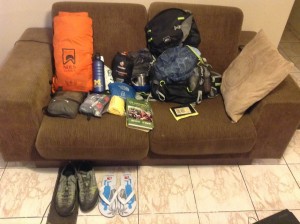
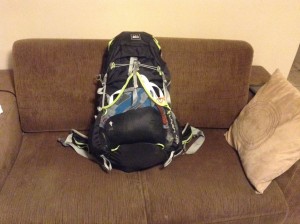
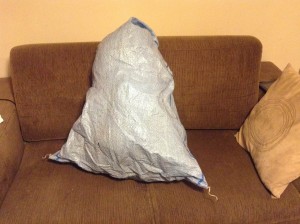
Until next time,
José
by Jose | Jun 4, 2013
En route to Perú, I finally have a few moments to catch you up on the past month, which passed in a flash! M1 year is over, and we are officially on summer break. It´s hard to believe how quickly it all passed. I´m headed to South America for a few weeks of vacation followed by research with a group of classmates in Quito, Ecuador.
The past month was full of fun happenings, including Second Look Weekend, the spring Biorhythms show, memorial day weekend in D.C. (unfortunately I did not get to ride with Rolling Thunder), the end-of-the-year bar crawl, and the creation of our class tumblr. In terms of classes, we finished Infectious Diseases (best sequence of the year) and sped through Embryology and Human Growth and Development. The last two sequences were a great chance to revisit a lot of what we learned this year, but I found it challenging to concentrate and take full advantage with minor burnout and the looming vacation.
One thing I´m looking forward to this summer, in revisiting a region that I´ve been to at least ten times in the past, is seeing how (if at all) a year of medical school has changed my perspective. Aside from the lump of medical knowledge, I´m curious to see how else I have changed, if perhaps the past year has made me more comfortable with uncertainty or ambiguity. Time will tell. I am also excited to see what (if any) changes the region has experienced in the past year under the current presidencies.
I have to share something completely unrelated but pretty amazing — I just witnessed a marriage proposal at 30K feet over the Pacific! For real. The airplane erupted in applause after the bride-to-be accepted.
My next post will be on how to pack for everything you need for summer break in a carry on bag.
Cheers,
Jose
by Jose | Apr 15, 2013
What is hope? Hoping to pass, hoping to travel, hoping to grow…
I think I know how to recognize hope, if not how to define it. I hear it in the way my friend talks about her crush. I see it in the faces of classmates as spring finally peeks through the long Michigan winter. I feel it as I pass the LRC free food table (might get lucky). I also remember, while on home visits in Peru, the way TB patients would always seem to say, “I hope you can help me stay alive.”
But what is hope? Within the confines of the hospital and medical school, it can be a driving force, a fuel to the engine of human action. It keeps students up late, meditating on the minutia of microbiology. It impels physicians and other health providers to do their best for the patient. It keeps patients adherent to treatment regimens. Orisen Swett Marden puts it nicely: “There is no medicine like hope, no incentive so great, and no tonic so powerful as expectation of something tomorrow.”
The expectation of something [better] tomorrow. M1 year has been challenging and rewarding, and while great, I expect more from next year and even more from the year after that. Is that too idealistic? I don’t think so, but only time will tell. I look forward to sharing the journey with you through this blog.
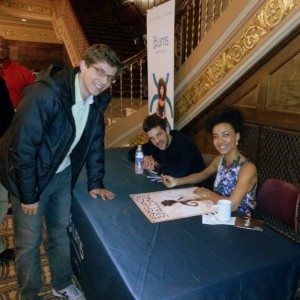
Meeting Esperanza Spalding after her concert at the Michigan Theater.






